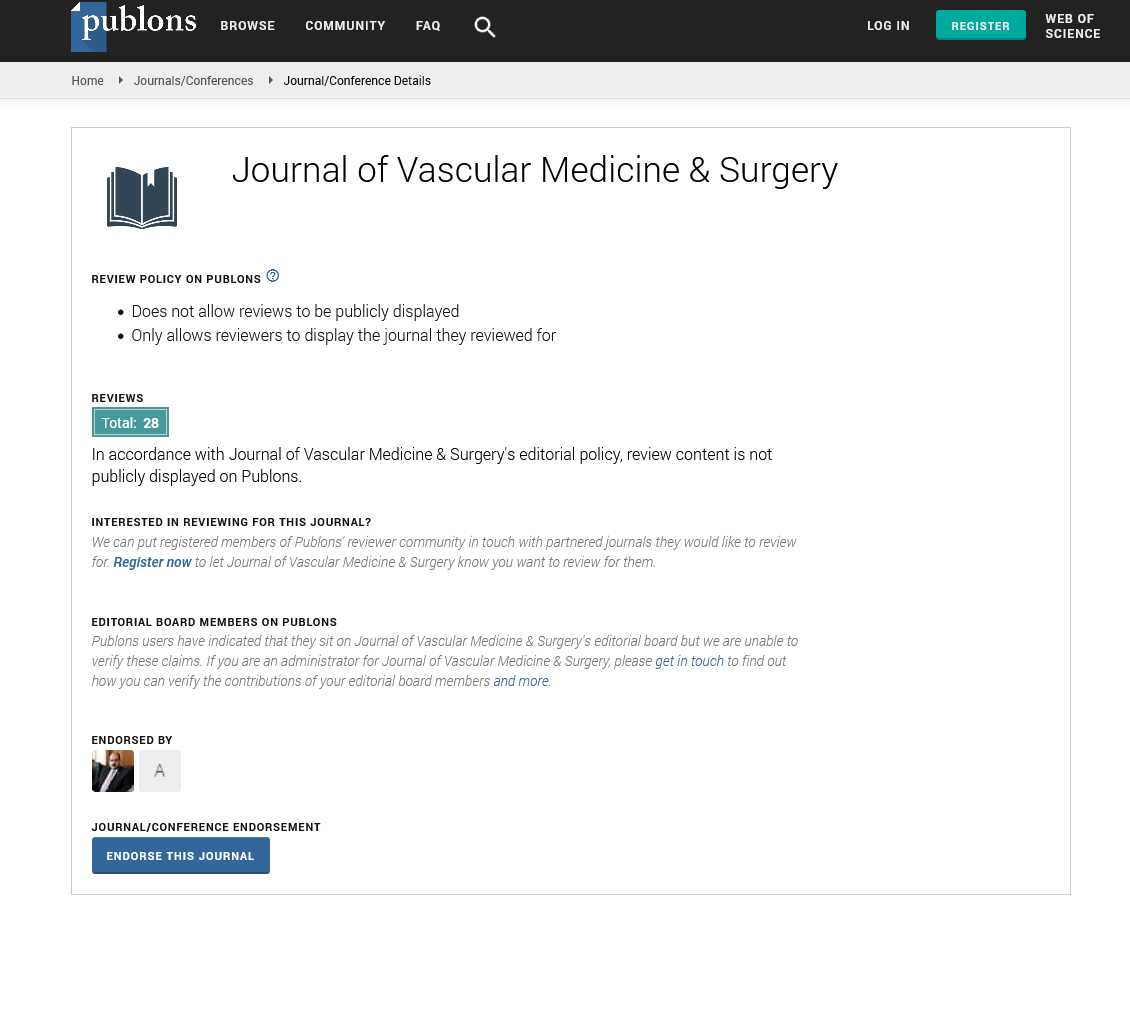Indexed In
- Open J Gate
- Academic Keys
- RefSeek
- Hamdard University
- EBSCO A-Z
- OCLC- WorldCat
- Publons
- Euro Pub
- Google Scholar
- SHERPA ROMEO
Useful Links
Share This Page
Journal Flyer

Open Access Journals
- Agri and Aquaculture
- Biochemistry
- Bioinformatics & Systems Biology
- Business & Management
- Chemistry
- Clinical Sciences
- Engineering
- Food & Nutrition
- General Science
- Genetics & Molecular Biology
- Immunology & Microbiology
- Medical Sciences
- Neuroscience & Psychology
- Nursing & Health Care
- Pharmaceutical Sciences
Commentary Article - (2024) Volume 0, Issue 0
Heart Valve Disease: The Way It Affects Circulation and Health
Rizwan Usman*Received: 25-Sep-2024, Manuscript No. JVMS-24-27622; Editor assigned: 27-Sep-2024, Pre QC No. JVMS-24-27622 (PQ); Reviewed: 11-Oct-2024, QC No. JVMS-24-27622; Revised: 18-Oct-2024, Manuscript No. JVMS-24-27622 (R); Published: 28-Oct-2024, DOI: 10.35248/2329-6925.24.S24.558
Description
Heart valve disease is a significant medical condition that affects the proper functioning of the heart. The heart has four valvesthe mitral, tricuspid, aortic and pulmonary valves that ensure blood flows in the correct direction through the heart’s chambers and into the body. When these valves malfunction, the ability of the heart to efficiently circulate blood is decreased leading to various health complications.
Types of valve malfunctions
Heart valve disease occurs when one or more of the heart's valves protect effectively. These failures can affect any of the heart’s valves, but the aortic and mitral valves are most commonly involved. There are three main types of valve malfunctions: Stenosis, regurgitation and atresia.
Stenosis: This occurs when the valve narrows, reducing blood flow.
Regurgitation: Regurgitation, also known as valve insufficiency, occurs when a valve fails to function properly, allowing blood to flow backward.
Atresia: In this case, the valve requires a channel that inhibits blood flow completely.
Diagnosis of heart valve disease
Diagnosing heart valve disease involves a combination of clinical evaluations, imaging studies and laboratory tests. Early detection through these diagnostic methods is significant to preventing severe complications.
Physical examination: A physician may listen for abnormal heart sounds, such as echoes, using a stethoscope. The echoes may suggest turbulent blood flow produced by damaged valves.
Echocardiogram: This ultrasound test provides detailed images of the heart’s structure and function, helping to identify valve defects.
Electrocardiogram (ECG): An ECG measures electrical activity in the heart and it can detect abnormal rhythms or pressure caused by valve problems.
Chest x-ray: This imaging test can show an enlarged heart or fluid buildup in the lungs, which may result from valve problems.
Cardiac catheterization: In some cases, this invasive procedure is used to measure pressures within the heart and assess valve function.
MRI scans: This advanced imaging technique provides highresolution images of the heart and valves, providing Specific information about valve function.
Causes of heart valve disease
Heart valve disease can occur from a wide range of causes, including.
Congenital defects: Some people are born with heart valve anomalies, such as bicuspid aortic valve disease, in which the aortic valve has just two lobes.
Aging: As people age, calcium buildup can accumulate on the valves, causing Pain and stenosis.
Rheumatic fever: This condition, which frequently results from chronic throat infections, can cause inflammation and damage of the heart valves.
Infective endocarditis: Bacterial infections can damage the valves and lead to regurgitation or stenosis.
Other conditions: High blood pressure, atherosclerosis and connective tissue disorders such as Marfan syndrome can increase the risk of valve disease.
Symptoms of heart valve disease
The symptoms of heart valve disease varied according to the severity and type of heart valve dysfunction. Mild valve disease can frequently remain non-symptomatic. These symptoms may simulate those of other cardiovascular conditions, an accurate diagnosis is essential. However, when the illness advances, symptoms may include.
Shortness of breath: Shortness of breath indicates difficulty breathing, particularly during prolonged physical activity.
Fatigue: A reduced ability to perform daily activities due to a lack of oxygenated blood.
Chest pain: Pain or pressure in the chest, particularly during exercise.
Swelling: Edema in the ankles, feet or abdomen due to fluid buildup.
Fainting or dizziness: A reduction in blood supply to the brain can cause dizziness or loss of consciousness.
Citation: Usman R (2024). Heart Valve Disease: The Way It Affects Circulation and Health. J Vasc Surg. S24:558.
Copyright: © 2024 Usman R. This is an open access article distributed under the terms of the Creative Commons Attribution License, which permits unrestricted use, distribution and reproduction in any medium, provided the original author and source are credited.

